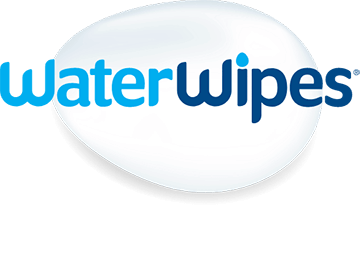Babies and infants have less control over their environment and are dependent on carers to keep them cool in summer. With this in mind, we’ve got some top tips – as well as advice from expert dermatologists Dr. Cairine Wilkinson, Dr. Pixie McKenna and Dr. Deshan Sebaratnam – on baby heat rash treatment and how to care for your little one’s skin in summer.
1. What is baby heat rash?
2. Baby heat rash symptoms
3. Baby heat rash treatment - how to treat baby heat rash
4. How to protect baby’s skin in summer
1. What is baby heat rash?
Baby heat rash occurs when your baby’s skin gets hot and sweat glands become blocked.
Babies often get heat rash because they can’t regulate their body temperature like adults can. This means it’s up to you to keep a close eye on their skin and ensure you act quickly if you spot any tell-tale baby heat rash symptoms. We’ve detailed these below.
2. Baby heat rash symptoms
If you’re not sure if it’s baby heat rash, here are the symptoms to look out for:
Small red bumps on the skin – These can be typically found on the chest neck and upper back and sometimes in small babies, these can look like very small water blisters.
Redness.
Mild swelling.
An irritable baby – Heat rash can feel itchy so you may notice your baby pulling at their clothes or generally irritated.
Horrible red bumps are the last things you want to see on your baby’s beautiful skin - but don’t panic. It can happen easily and you’re not a terrible parent! Read on to learn more about baby heat rash treatments that you can do at home.
3. Baby heat rash treatment
If your baby is suffering from heat rash, here are some treatments and home remedies you can try to cool them down and get their skin back to normal.
It's worth noting that baby heat rash can also occur in the wintertime if you apply ointment on the skin that blocks your baby's pores and sweat glands.
1. Cool them down
A quick and easy way to cool them down is to use a surface wipe such as WaterWipes biodegradable, vegan, cruelty-free and sensitive baby wet wipes. You can even put the wipes in the fridge first to provide a soothing experience.
WaterWipes baby wipes are made with 99.9% purified water and just a drop of fruit extract and are gentle to use on newborn babies and even premature babies. They help prevent nappy rash and are gentle and soft enough to use to help heal heat rash.
You could also wet a cloth in cool water and apply this to the affected areas to calm the skin and reduce redness.
2. Give them a cool bath
Run a cool – but not cold! – bath and let them soak in this for 10 minutes, with no soap or perfumed body wash. This should cool down their skin, unclog their pores1, and help their body regulate its temperature. The swelling and redness should ease after this after this treatment. Need some tips for bathing your newborn or toddler? No problem - just head on over to our bathing a newborn article to learn how to bathe your newborn baby.
3. Air their skin
Let your baby enjoy a little time without clothes2 to allow the skin time to cool down and breathe. You could also consider putting a fan on in their room – but not directly on them
Tips from a mum on how to treat baby heat rash
“When Aliyah got heat rash I really freaked out,” says mum, Izzy. “She had the most beautiful porcelain skin so to suddenly see these horrible red spots was really worrying. I actually wanted to go to the emergency room but my mum suggested I start with calling 999."
"As the symptoms matched up with heat rash I calmed down. We were told not to use any creams and just put cold flannels on her, which we did and it disappeared really quickly. I still felt guilty for not realising she was too hot but it wasn’t as if we’d let her burn or anything. From then on we just made sure that, if it was warm, her clothes were slightly more lightweight and cotton.”
4. How to protect your baby's skin in the summer
There are several ways to keep your little one safe and sound during the summer months while still having a great time. Follow these tips and enjoy the sunny weather, wherever you are!
Dress them appropriately for the weather
Dress your baby in light, loose clothing to help regulate their temperature on hot days. It's recommended that you keep arms and legs covered to prevent sun exposure and choose dark or bright colours3 that can repel the sun's rays. Get them to wear a wide-brimmed sun hat too, preferably one with a long flap to also protect the back of their neck.
Apply sunscreen every two hours
Apply high factor sun protection factor (SPF) to all exposed areas, if you're spending time outdoors.
“Use a sunscreen with a high SPF and UVA rating, which protects against both UVA and UVB rays.” Dr. Cairine Wilkinson notes. “Sunscreen should be rubbed into all exposed areas 15 minutes before going out in the sun and reapplied every couple of hours.4
If your baby is going to be splashing about in the pool, be sure to use a water-resistant sunscreen and always remember to re-apply once they have come out of the water. You can also dress your baby in swimwear that covers up their arms and legs for extra protection from the sun and put a long floppy hat on them to protect their head and neck too.”5
Sunscreen is also not recommended for babies less than six months of age — shade, clothing and hats are best.
Find ways to cool down
Playing with your little one in a shallow paddling pool can be a fun way to keep cool but remember not to leave them unattended!
You can also keep their skin cool and sweat-free by cleaning them regularly with WaterWipes.
Stick to the shade
Babies less than six months old should be kept out of direct sunlight as their skin contains too little melanin and is much more sensitive and delicate than ours, therefore very susceptible to sunburn. Try to keep them in the shade when possible, maybe by attaching a parasol to your pram or sitting beneath a table umbrella.
Ensure their eyes are protected too
Protect their eyes with sunglasses that carry the CE mark6. For babies, choose a wide-brimmed hat should shield their face from the sun, and we recommend seeking shade too.
Hydration is important
Keep them well hydrated throughout the day. Your baby must be drinking lots of fluids in the summer to stay hydrated, if not, this can lead to dehydration meaning the body loses more fluids than it is taking in.
If your baby is a little older, consider hacks such adding as water and fruit to lolly moulds to encourage them to take in fluids, while staying cool.
“Some key signs7 to look out for to help you recognise if your child is dehydrated include them being thirsty, dizzy or tired, having dry lips, mouth and eyes, dark yellow and strong-smelling urine or not urinating enough.” Dr Pixie McKenna says.
"It may be difficult to look out for some of these symptoms in young babies, so just ensure you are regularly giving them small amounts of fluid throughout the day and it may be easier to use a spoon or a syringe."
“If you are breastfeeding, you do not need to give them both milk and water, but this may mean in the summer they want to feed more than usual to avoid dehydration. Note, if you are giving your newborn water, you should be giving them cooled-boiled water.”
Be careful around chlorinated water
Sunshine and holidays often mean taking a dip in the pool to cool down. If your little one loves splashing around in the water, it can be a great way to keep your baby cool.
Chlorine is a chemical used to treat water to eliminate any harmful micro-organisms and it’s important to note that if your baby’s skin is sensitive, the chlorine may cause some irritation such as itchy, red or dry skin and bumps.8
“Heavy exposure to heavily chlorinated water may cause irritant dermatitis and dry the skin in some babies, depending on how sensitive their skin is and how it reacts to particular substances. But this will vary baby to baby and not everyone will develop skin irritations due to chlorine,” Dr. Cairine Wilkinson added.
“Rinse the skin with clean, non-chlorinated water once they have finished in the pool to help avoid any chlorine related irritations. Once you have rinsed your little one down, slather on moisturiser all over the skin to prevent dryness.”
Can salt water have the same effect?
Salt water can also dry out your baby’s skin. “In addition, sand can also cause the skin to become sensitive due to the harsh sand grains rubbing against the skin,” Dr. Cairine Wilkinson noted. “The top layer of the epidermis is 30% thinner in babies than adult skin, meaning it is more prone to sensitivity and dryness.9 As with chlorinated water, your little one should be rinsed off with clean water to minimise any irritation”.
Keep an eye out for eczema
Summer is a tricky time for those who suffer from eczema, especially for an infant’s highly sensitive skin. The summer heat increases perspiration which can lead to rashes, skin irritations, and an eczema flare-up if a baby suffers from atopic dermatitis.
Dr. Deshan Sebaratnam, consultant Dermatologist and Fellow of the Australasian College of Dermatologists told us: “It is critical to check the fine print on products used on a newborn during the summer months.
“It is important to always check the products that you apply on your skin and the skin of children and aim for products that have minimal additives and chemicals to avoid skin irritations. This is particularly true if a child has a tendency towards sensitive skin or eczema.”
So, with the right prep, you are totally fine to enjoy that summer sun. Now, where did we bury that swimsuit?
If you found our baby heat rash tips helpful, take a look at our range of baby skin articles on our Parenting Hub:

